
What the heck is OAuth 2?
In this blog post, I would like to give you a high level overview of the OAuth 2 specification. When I started to learn about this, I got lost very quickly in all the different aspects that are involved. To make sure you don’t have to go through the same thing, I’ll explain OAuth 2 as if you don’t even have a technical background. Since there is a lot to cover, let’s jump right in!
The core concepts of security
When it comes to securing an application, there are 2 core concepts to keep in mind: authentication and authorization.
Authentication
With authentication, you’re trying to answer the question “Who is somebody?” or “Who is this user?” You have to look at it from the perspective of your application or your server. They basically have stranger danger. They don’t know who you are and there is no way for them to know that unless you prove your identity to them. So, authentication is the process of proving to the application that you are who you claim to be.
In a real world example, this would be providing your ID or passport to the police when they pull you over to identify yourself. Authentication is not part of the standard OAuth 2 specification. However, there is an extension to the specification called Open ID Connect that handles this topic.
Authorization
Authorization is the flip side of authentication. Once a user has proven who they are, the application needs to figure out what a user is allowed to do. That’s essentially what the authorization process does.
An easy way to think about this is the following example. If you are a teacher at a school, you can access information about the students in your class. However, if you are the principal of the school you probably have access to the records of all the students in the school. You have a larger access because of your job title.
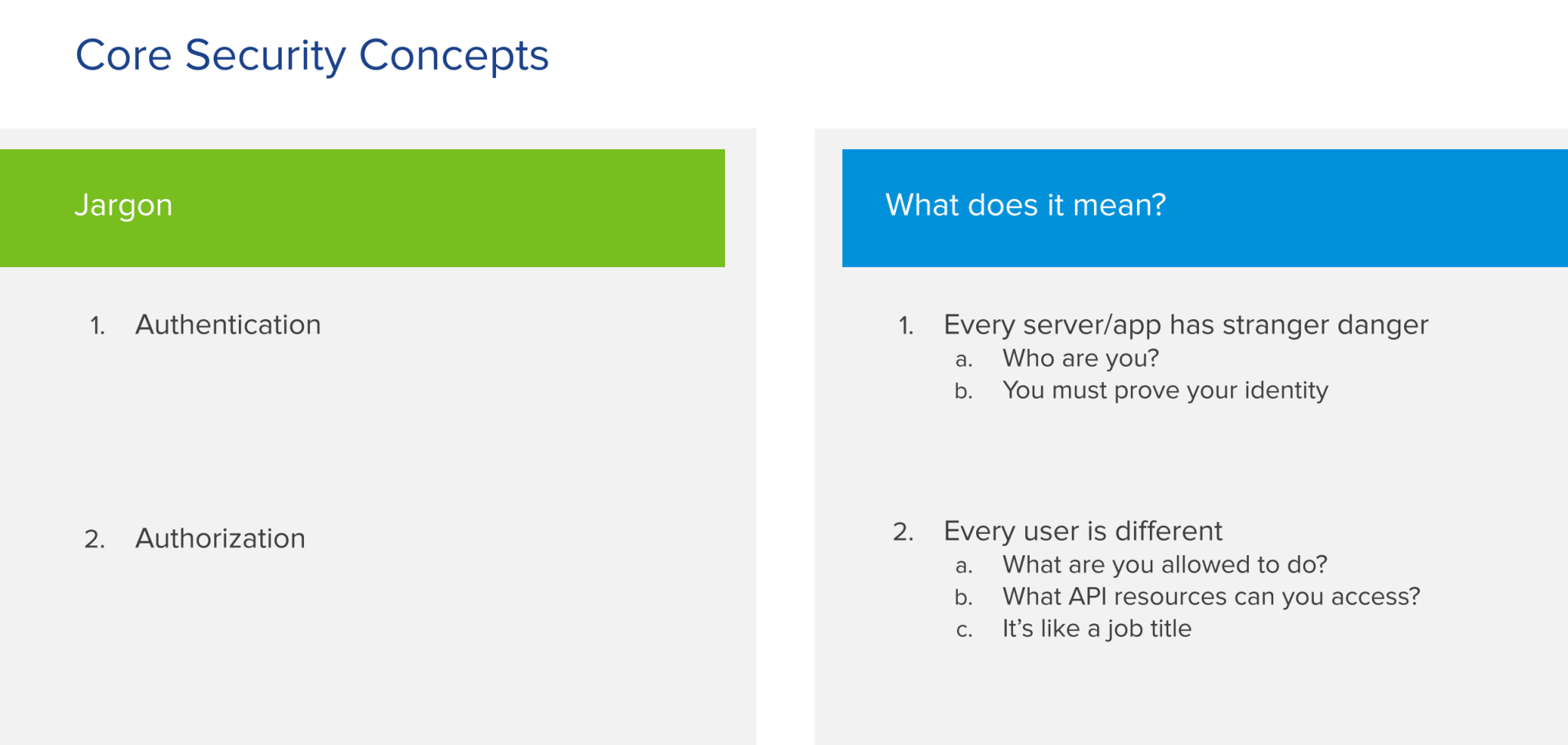
OAuth 2 Roles
To fully understand OAuth 2, you have to be aware of the following 4 actors that make up the specification:
- Resource Owner
- Resource Server
- Authorization Server
- Client / Application
As before, let’s explain it with a very basic example to see how it actually works.
Let’s say you have a jacket. Since you own that jacket, you are the Resource Owner and the jacket is the Resource you want to protect. You want to store the jacket in a locker to keep it safe. The locker will act as the Resource Server. You don’t own the Resource Server but it’s holding on to your things for you. Since you want to keep the jacket safe from being stolen by someone else, you have to put a lock on the locker. That lock will be the Authorization Server. It handles the security aspects and makes sure that only you are able to access the jacket or potentially someone else that you give permission. If you want your friend to retrieve your jacket out of the locker, that friend can be seen as the Client or Application actor in the OAuth flow. The Client is always acting on the user’s behalf.
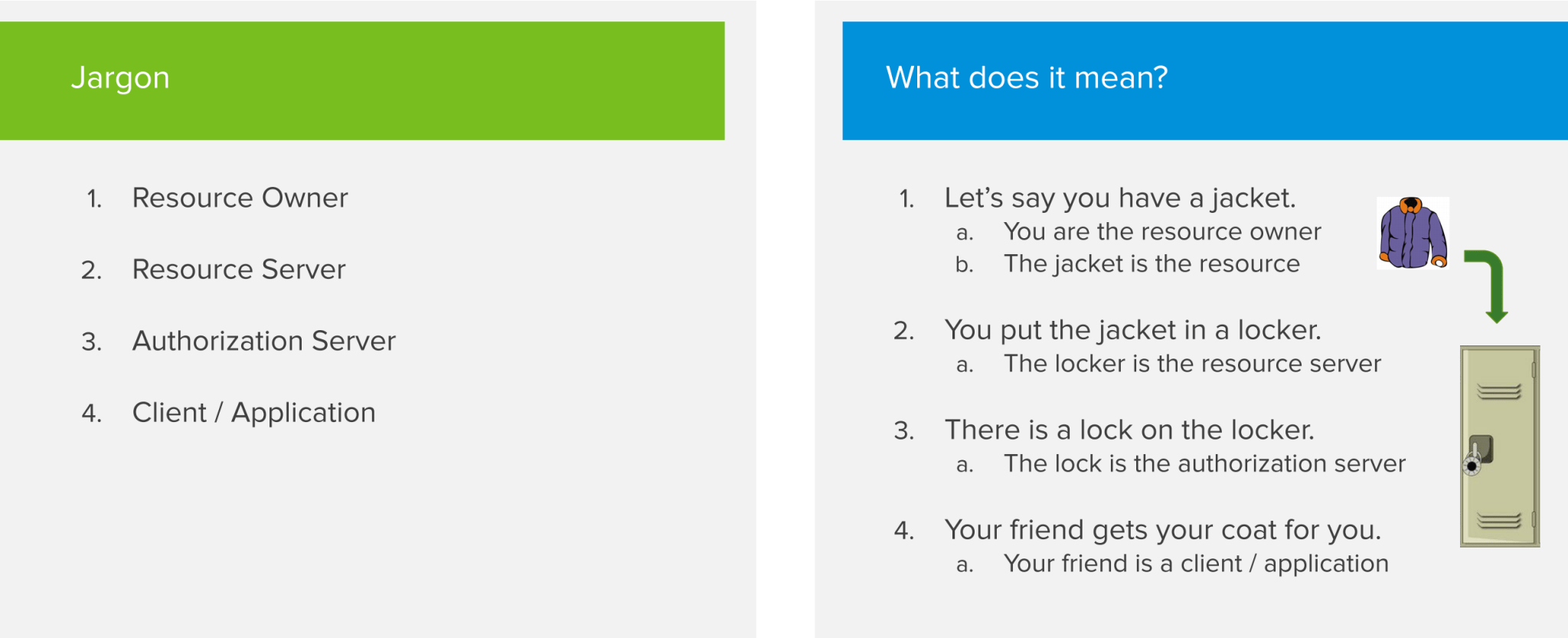
Tokens
The next concept that you’re going to hear about a lot is tokens.There are various types of tokens, but all of them are very straightforward to understand. The 2 types of tokens that you encounter the most are access tokens and refresh tokens.
When it comes to access tokens you might have heard about JWT tokens, bearer tokens or opaque tokens. Those are really just implementation details that I’m not going to cover in this article.
In essence, an access token is something you provide to the resource server in order to get access to the items it is holding for you. For example, you can see access tokens as paper tickets you buy at the carnival. When you want to get on a ride, you present your ticket to the person in the booth and they’ll let you on. You enjoy your ride and afterwards your ticket expires. Important to note is that whoever has the token, owns the token. So be very careful with them. If someone else gets a hold on your token, he or she can access your items on your behalf!
Refresh tokens are very similar to access tokens. Essentially, you use them to get more access tokens. While access tokens are typically short lived, refresh tokens tend to have a longer expiry date. To go back to our carnival example, a refresh token could be your parents credit card that can be used to buy more carnival tickets for you to spend on rides.
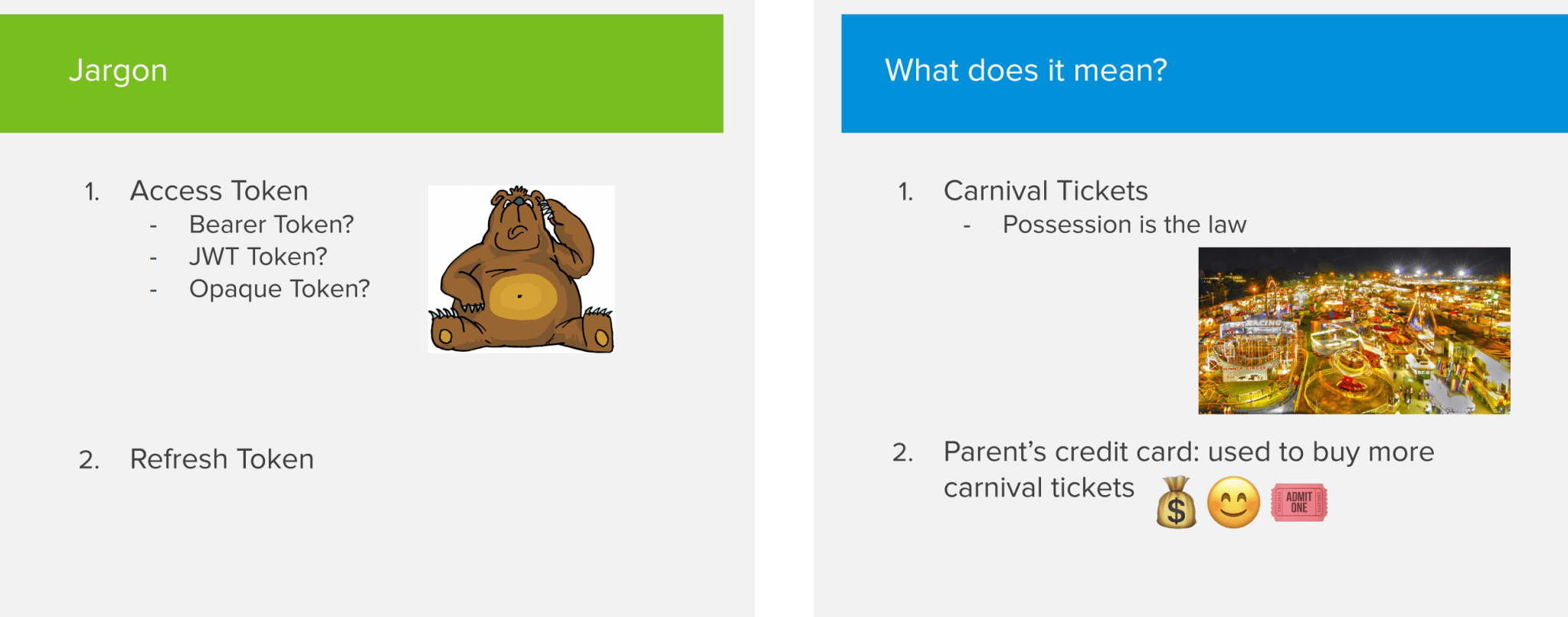
Scopes
The next concept to cover are scopes. A scope is basically a description of things that a person can do in an application. You can see it as a job role in real life (e.g a principal or teacher in a high school). Certain scopes can grant you more permissions than others.
I know I said I wasn’t going to get into technical details, but if you’re familiar with Spring Security, then you can compare scopes with what Spring Security calls roles. A scope matches one-on-one with the concept of a role.
The OAuth specification does not specify how a scope should look like but often they are dot separated Strings like blog.write. Google on the other hand uses URLs as a scope. As an example: to allow read only access to someone’s calendar, they will provide the scope https://www.googleapis.com/auth/calendar.readonly.
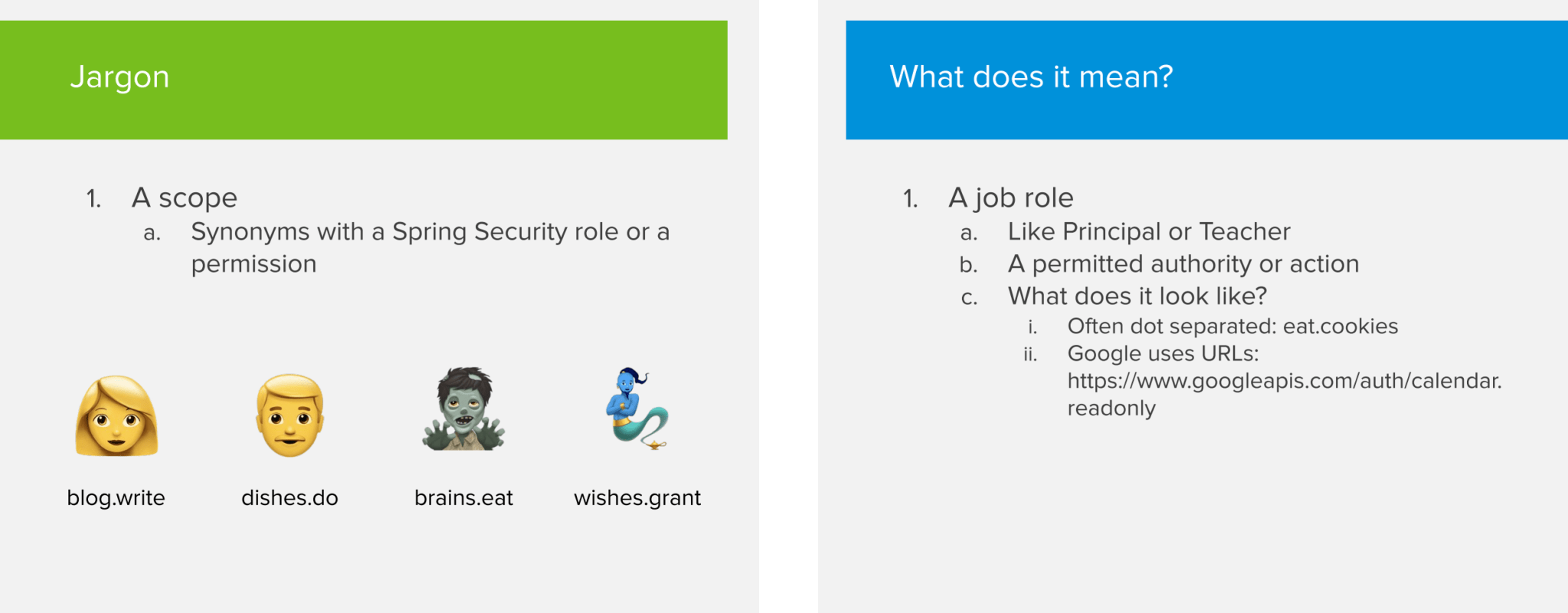
Grant types
Grant types are typically where things start to get confusing for people. Let’s first start with showing the most common used grant types:
- Client Credentials
- Authorization Code
- Device Code
- Refresh
- Password & Implicit
Client Credentials is a grant type used very frequently when 2 back-end services need to communicate with each other in a secure way.
The next one is the Authorization Code grant type, which is probably the most difficult grant type to fully grap. You use this grant type whenever you want users to login via a browser based login form. If you have ever used the ‘Log in with Facebook’ or ‘Log in with Google’ button on a website, then you’ve already experienced an Authorization Code flow without even knowing it!
Next up is the Device Code grant type, which is fairly new in the OAuth 2 scene. It’s typically used on devices that have limited input capabilities, like a TV. For example, if you want to log in to Netflix, instead of providing your username and password; it will pop-up a link that displays a code, which you have to fill in using the mobile app.
The Refresh grant type most often goes hand in hand with the Authorization Code flow. Since access tokens are short lived, you don’t want your users to be bothered with logging in each time the access token expires. So there’s this refresh flow that utilizes refresh tokens to acquire new access tokens whenever they’re about to expire.
The last 2 grant types are Password and Implicit. These grant types are less secure options that are not recommended when building new applications. We’ll touch on them briefly in the next section, which explains the above grant types in more detail.
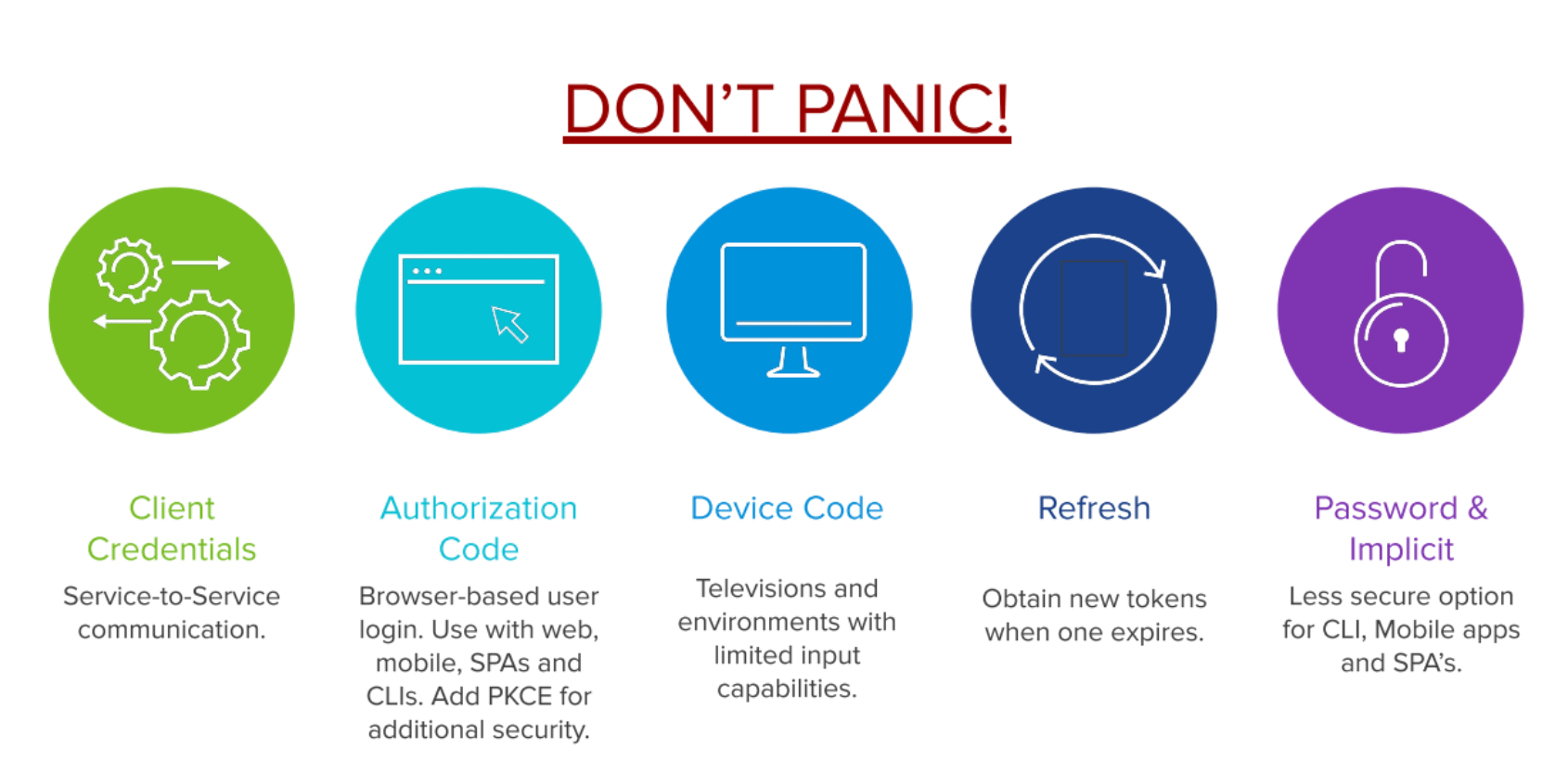
Authorization flows
An authorization flow contains one or more steps that have to be executed in order for a user to get authorized by the system. There are 4 authorization flows we’ll discuss:
- Client Credentials flow
- Password flow
- Authorization Code flow
- Implicit flow
Client Credentials flow
The Client Credentials flow is the simplest flow to implement. It works very similar to how a traditional username/password login works. Use this flow only if you can trust the client/application, as the client credentials are stored within the application. Don’t use this for single page apps (SPAs) or mobile apps, as malicious users can deconstruct the app to get ahold of the credentials and use them to get access to secured resources. In most use cases, this flow is used to communicate securely between 2 back-end systems.
So how does the Client Credentials flow work? Each application has a client ID and secret that are registered on the authorization server. It presents those to the authorization server to get an access token and uses it to get the secure resource from the resource server. If at some point the access token expires, the same process repeats itself to get a new token.
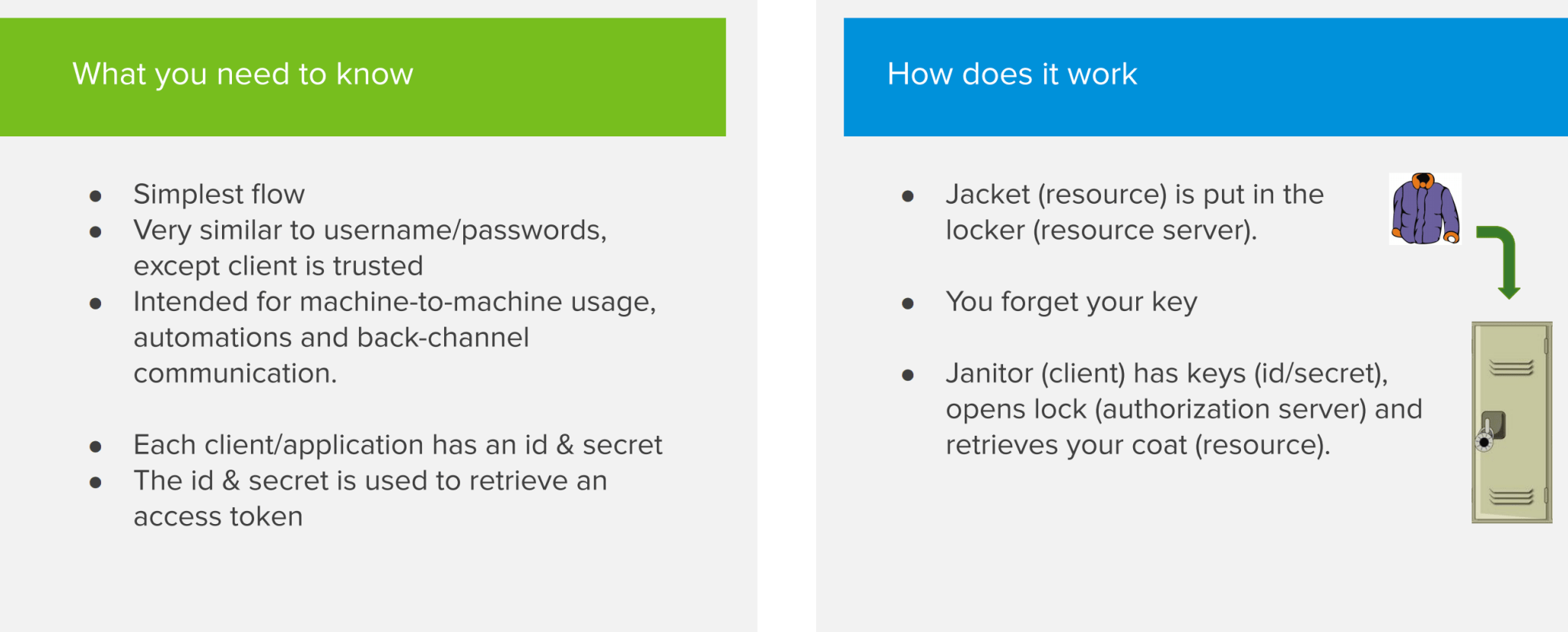
Password flow
The Password flow is very similar to the Client Credentials flow, but is very insecure because there’s a 3rd actor involved being an actual end user. Instead of a secure client that we trust presenting an ID and secret to the authorization provider, we now have a user ‘talking’ to a client. In a Password flow, the user provides their personal credentials to the client. The client then uses these credentials to get access tokens from the authorization server. This is the reason why a Password flow is not secure, as we must absolutely be sure that we can trust the client to not abuse the credentials for malicious reasons.
Exceptions where this flow could still be used are command line applications or corporate websites where the end user has to trust the client apps that they use on a daily basis. But apart from this, it’s not recommended to implement this flow.
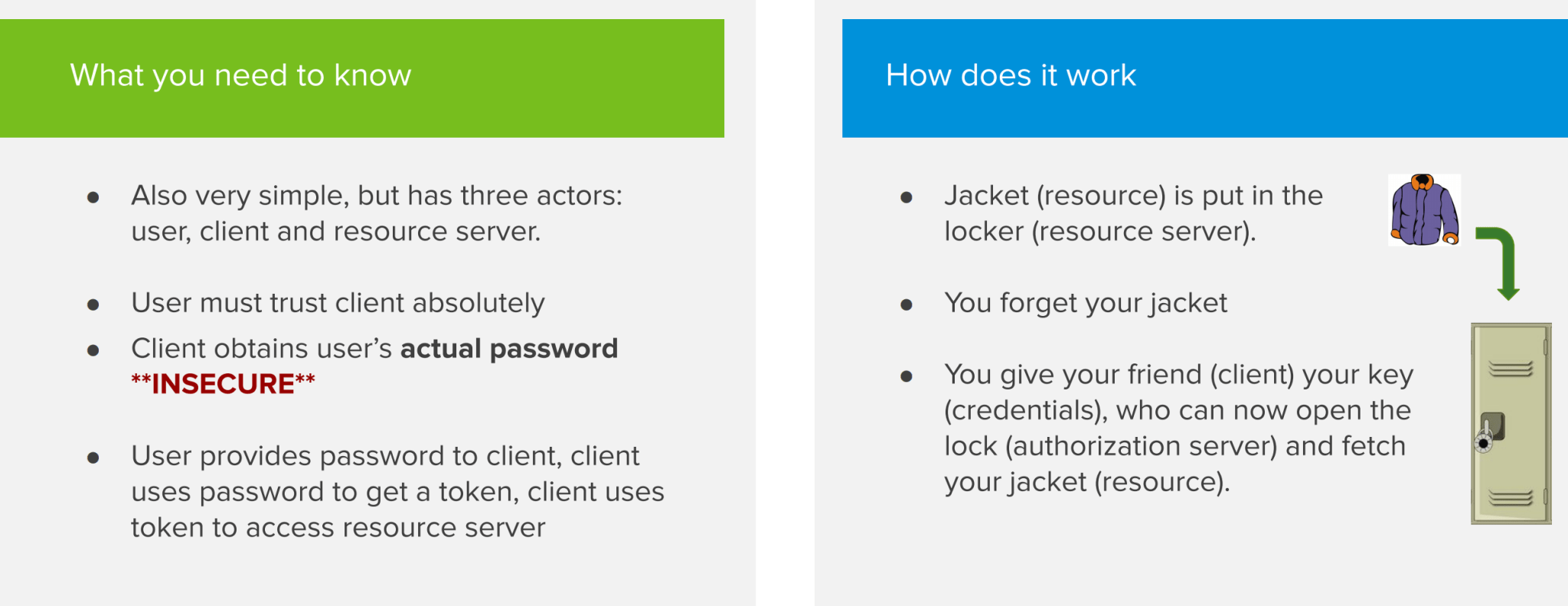
Authorization Code Flow
This is the flow that you definitely want to understand, as it’s the flow that’s used the most when securing applications with OAuth 2. This flow is a bit more complicated than the previously discussed flows. It’s important to understand that this flow is confidential, secure and browser based.
The flow works by making a lot of HTTP redirects, which is why a browser is an important actor in this flow. There’s also a back-channel request (called like this because the user is not involved in this part of the flow) in which the client or application talks directly to the authorization server. In this flow, the user typically has to approve the scopes or permissions that will be granted to the application. An example could be a 3rd party application that asks if it’s allowed to have access to your Facebook profile picture after logging in with the ‘Log in with Facebook’ button.
Let’s apply the Authorization Code flow to our ‘jacket in the closet’ example to get a better understanding.
Our jacket is in the locker and we want to lend it to a friend. Our friend goes to the (high-tech) locker. The locker calls us, as we are the Resource Owner. This call is one of those redirects we talked about earlier. At this point, we establish a secure connection to the locker, which acts as an authorization server. We can now safely provide our credentials to give permission to unlock the lock. The authorization server then provides a temporary code called OAuth code to our friend. The friend then uses that OAuth code to obtain an access code to open the locker and get my jacket.
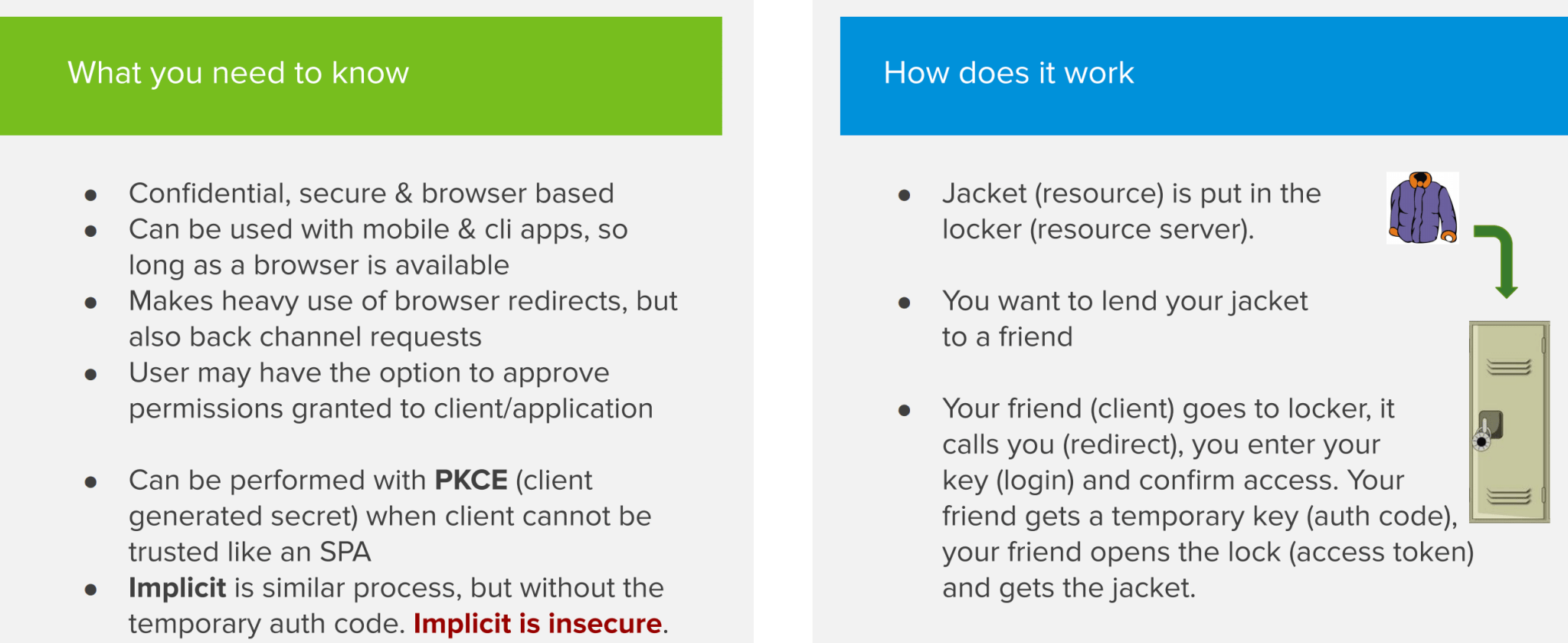
Implicit flow
The Implicit flow is basically the same as the Authorization Code flow, but without the temporary OAuth code. So after logging in, the authorization server will immediately send back an access token without requiring a back-channel request. This is less secure, as the token could be intercepted via a man-in-the-middle attack.
Conclusion
OAuth 2 may look daunting at first because of all the different actors involved. Hopefully, you now have a better understanding of how they interact with each other. With this knowledge in mind, it will be much easier to grasp the technical details once you start delving into them.


